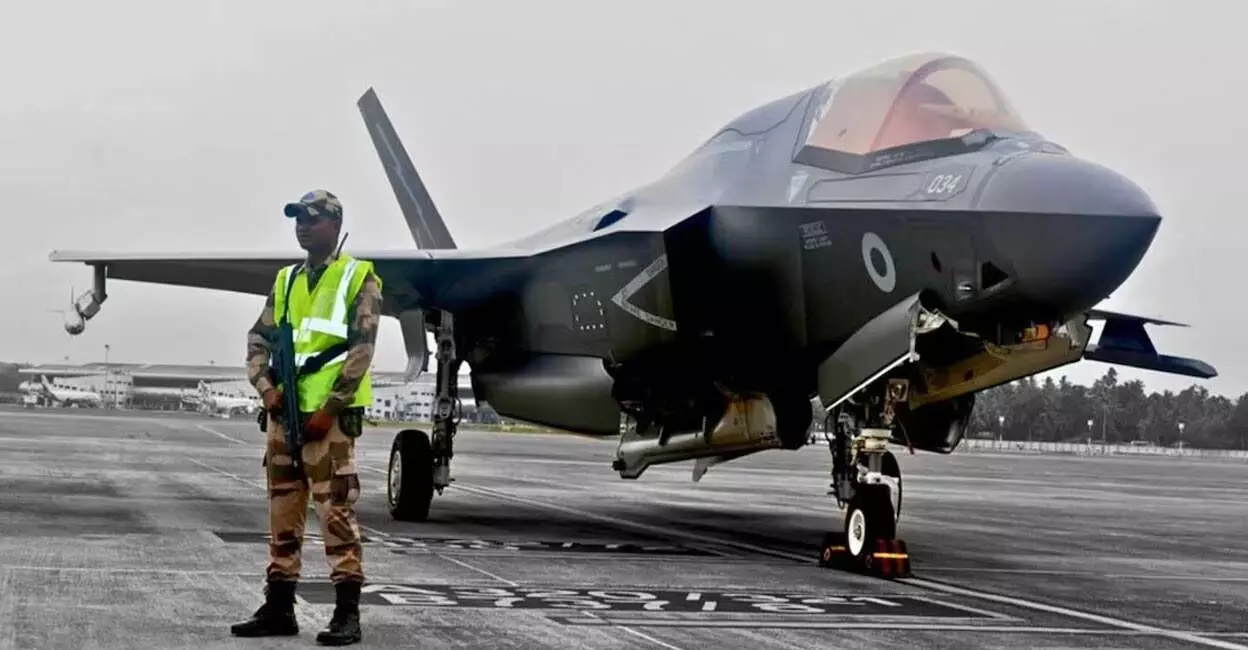Stranded F-35B Fighter at Thiruvananthapuram Airport Raises Concerns for Trump and Lockheed Martin
Stranded F-35B in Kerala highlights reliability issues, casting doubt on Lockheed Martin's stealth fighter just as US eyes sales to India.
image for illustrative purpose

A grounded Lockheed Martin F-35B stealth fighter at Thiruvananthapuram International Airport has become an embarrassing setback for the US defense giant and former President Donald Trump’s ambitious push to sell the advanced jet to India.
The F-35B, deployed on Britain’s HMS Prince of Wales, made an emergency landing at Kerala’s airport on the night of June 14 and has remained stuck ever since. On June 25, the British High Commission announced plans to move the aircraft to a maintenance hangar once specialist UK engineers and equipment arrive to service it.
The timing couldn’t be worse for Lockheed Martin. Earlier this year, in February, then-US President Donald Trump surprised India by announcing that the US was paving the way to provide India with F-35 stealth fighters. However, India’s Foreign Secretary Vikram Misri later clarified that no formal acquisition process had started.
India currently lacks fifth-generation fighters—the class of aircraft boasting stealth, supersonic speed, and advanced avionics. While China operates the J-20, and Pakistan co-develops the JF-17, India’s air force mainly relies on fourth- and 4.5-generation fighters like the Su-30MKI, Mirage 2000, and MiG-29. Its own Advanced Medium Combat Aircraft (AMCA) program is still in development.
Fifth-generation fighters offer significant upgrades, including invisibility through stealth coatings, internal weapons bays, and the ability to supercruise. Russia’s Su-57 remains less dependable, heightening the appeal of the F-35—despite its steep price tag, ranging from $80 million to $110 million per aircraft.
However, the Thiruvananthapuram incident highlights serious reliability and maintenance challenges with the F-35 program. The F-35 comes in three variants: F-35A (conventional takeoff and landing), F-35B (short takeoff and vertical landing), and F-35C (carrier-based). The stranded fighter was an F-35B, capable of vertical landing on carriers.
According to the 2024 US Department of Defense (DoD) report, all F-35 variants experience critical failures sooner than acceptable aviation standards. Metrics such as Mean Flight Hours Between Critical Failures (MFHBCF), Mean Flight Hours Between Removal (MFHBR), and Mean Flight Hours Between Unscheduled Maintenance Events (MFHBME-U) show the F-35B and F-35C underperforming since their induction in 2015. Frequent part replacements and maintenance have driven up costs.
Maintenance efficiency, measured by Mean Corrective Maintenance Time for Critical Failures (MCMTCF) and Mean Time to Repair (MTTR), also falls short. The prolonged repair time of the Thiruvananthapuram jet reflects these deficiencies.
Compounding these issues are delays in the F-35 modernization program (Block 4) and the crucial Technical Refresh-3 software update. Given these challenges, it is unsurprising that India remains cautious about adopting the fighter.
As the F-35B remains grounded in Kerala, Lockheed Martin’s reputation takes a hit, while Boeing advances with contracts to develop America’s sixth-generation fighter jets—signaling a potential shift in US defense priorities.

